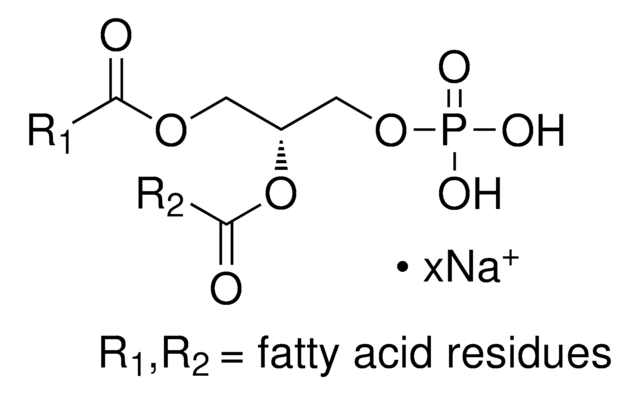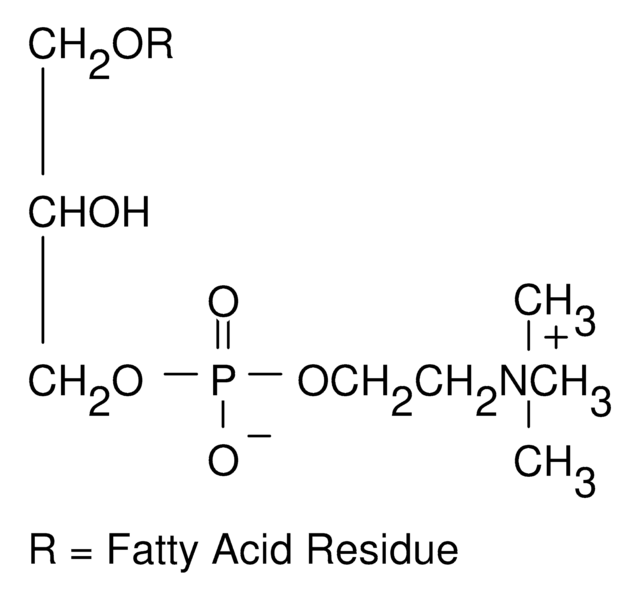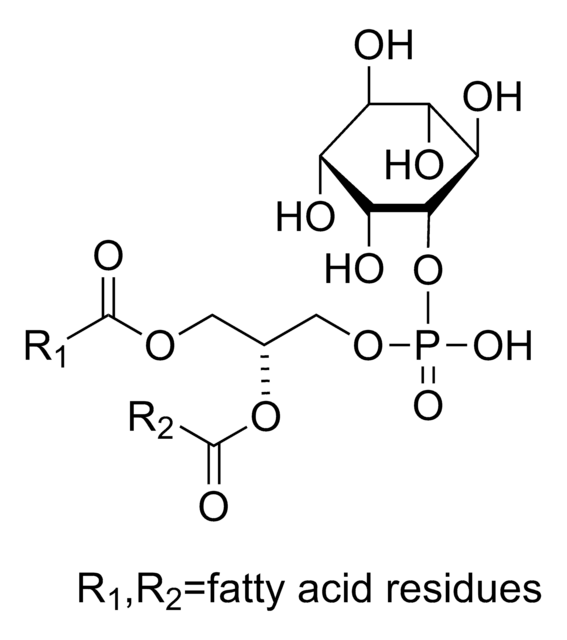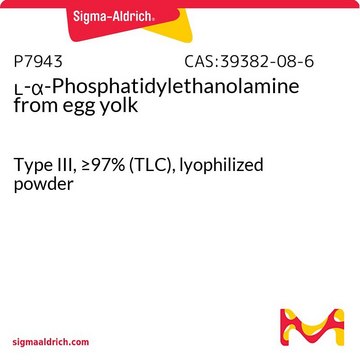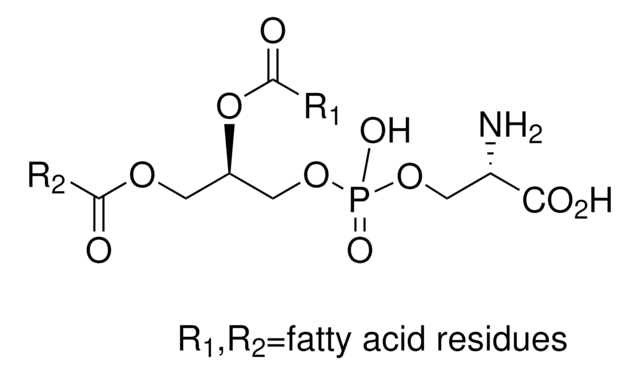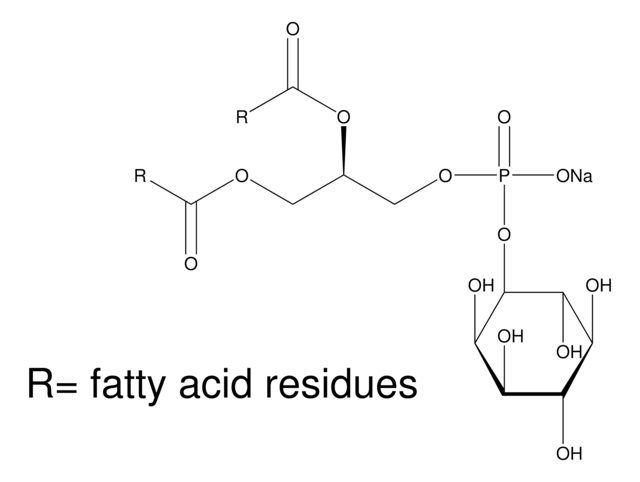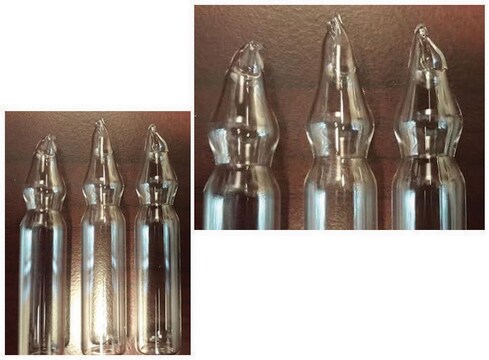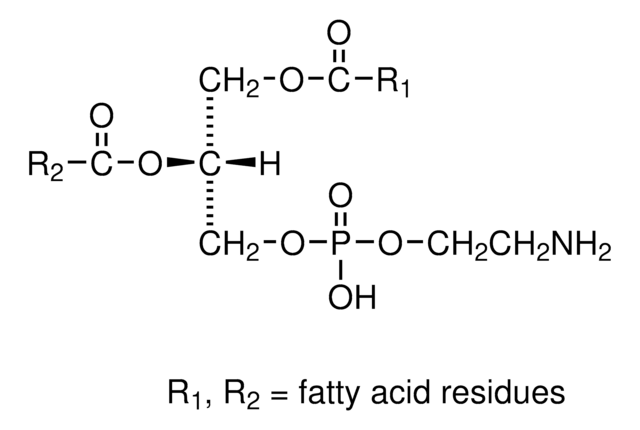L4754
3-sn-Lysophosphatidylethanolamine from egg yolk
Type I, ≥99%
Sinônimo(s):
1-Acyl-sn-glycero-3-phospho(2-aminoethanol), L-α-Lysocephalin, L-α-Lysophosphatidylethanolamine
Faça loginpara ver os preços organizacionais e de contrato
About This Item
Produtos recomendados
fonte biológica
egg yolk
Nível de qualidade
tipo
Type I
Ensaio
≥99%
Formulário
powder
tipo de lipídio
phosphoglycerides
Condições de expedição
ambient
temperatura de armazenamento
−20°C
Procurando produtos similares? Visita Guia de comparação de produtos
Descrição geral
Lysophosphatidylethanolamine (LysoPE), a prominent part of lysophospholipid, is obtained by the partial hydrolysis of phosphatidylethanolamine.
Aplicação
3-sn-Lysophosphatidylethanolamine from egg yolk has been used:
- to prepare liposomes for liposome binding and vesiculation assay
- as a phospholipid standard in high-performance thin layer chromatography (HPTLC) to detect the phospholipid composition of platelet-derived microparticles
- as a phospholipid standard in thin layer chromatography (TLC) to identify phospholipid in parasitophorous vacuoles (PV) containing Leishmania amazonensis
Ações bioquímicas/fisiológicas
L-α-Lysophosphatidylethanolamines from egg yolk are enriched with stearate and palmitate acylated fatty acids.
Lysophosphatidylethanolamine (LPE) participates in the physiological and pathological processes of the nervous system. It plays a key role in the function of the cell membrane, apoptosis, oxidative stress, and inflammatory responses.
Qualidade
Contains primarily stearic and palmitic acids.
Código de classe de armazenamento
11 - Combustible Solids
Classe de risco de água (WGK)
WGK 3
Ponto de fulgor (°F)
Not applicable
Ponto de fulgor (°C)
Not applicable
Equipamento de proteção individual
Eyeshields, Gloves, type N95 (US)
Escolha uma das versões mais recentes:
Já possui este produto?
Encontre a documentação dos produtos que você adquiriu recentemente na biblioteca de documentos.
Os clientes também visualizaram
Nguyen Dang Hung et al.
Lipids, 46(10), 893-906 (2011-07-12)
In the present study, the anti-inflammatory action of lysophosphatidylethanolamine (lysoPtdEtn), orally administered, in zymosan A-induced peritonitis was examined. Oral administration of 2-DHA-lysoPtdEtn (ED(50), ~111 μg/kg) or 2-ARA-lysoPtdEtn (ED(50), 221 μg/kg) was found to inhibit the plasma leakage in mice treated with zymosan
Yuan-Yuan Zhao et al.
Journal of chromatography. A, 1218(32), 5470-5479 (2011-07-09)
A hydrophilic interaction liquid chromatography-tandem mass spectrometry (HILIC LC-MS/MS) method using multiple scan modes was developed to separate and quantify 11 compounds and lipid classes including acetylcholine (AcCho), betaine (Bet), choline (Cho), glycerophosphocholine (GPC), lysophosphatidylcholine (LPC), lysophosphatidylethanolamine (LPE), phosphatidylcholine (PC)
Madhavi Avadhani et al.
Journal of bacteriology, 188(24), 8543-8550 (2006-10-10)
Short-chain alcohol dehydrogenases (SCADHs) synthesize a variety of intercellular signals and other chemically diverse products. It is difficult to predict the substrate of a SCADH on the basis of amino acid sequence homology, as the substrates are not known for
E Biró et al.
Journal of thrombosis and haemostasis : JTH, 3(12), 2754-2763 (2005-12-20)
The processes that govern the distribution of molecules between platelets and the microparticles (MP) they release are unknown. Certain proteins are sorted selectively into MP, but lipid sorting has not been studied. To compare the phospholipid composition and cholesterol content
Kumiko Makide et al.
Prostaglandins & other lipid mediators, 89(3-4), 135-139 (2009-05-12)
It is now widely accepted that lysophospholipids (LPLs), a product of the phospholipase A reaction, function as mediators through G-protein-coupled receptors. Notably, recent studies of lysophosphatidic acid (LPA) and sphingosine 1-phosphate (S1P) have revealed their essential roles in vivo. On
Nossa equipe de cientistas tem experiência em todas as áreas de pesquisa, incluindo Life Sciences, ciência de materiais, síntese química, cromatografia, química analítica e muitas outras.
Entre em contato com a assistência técnica